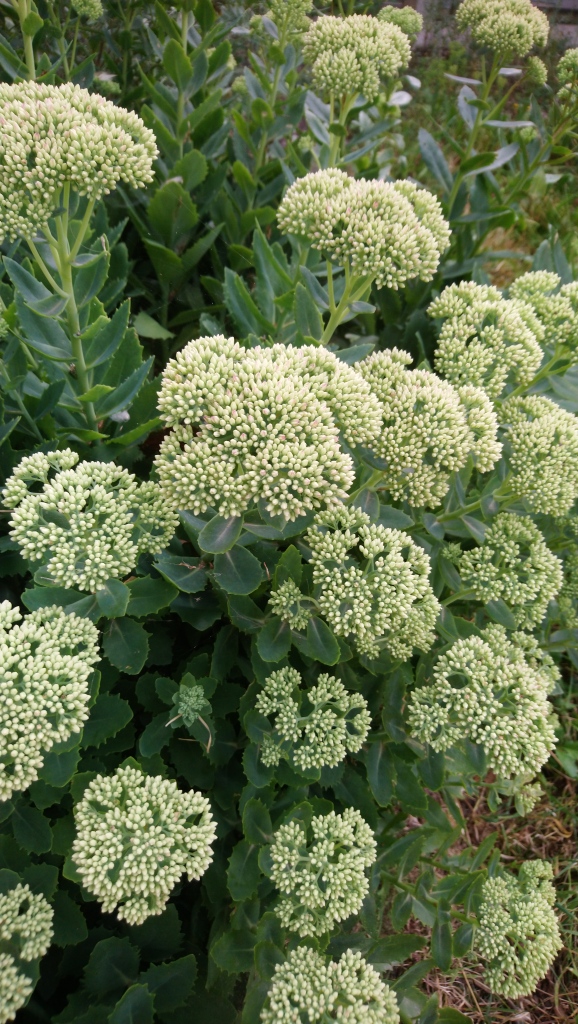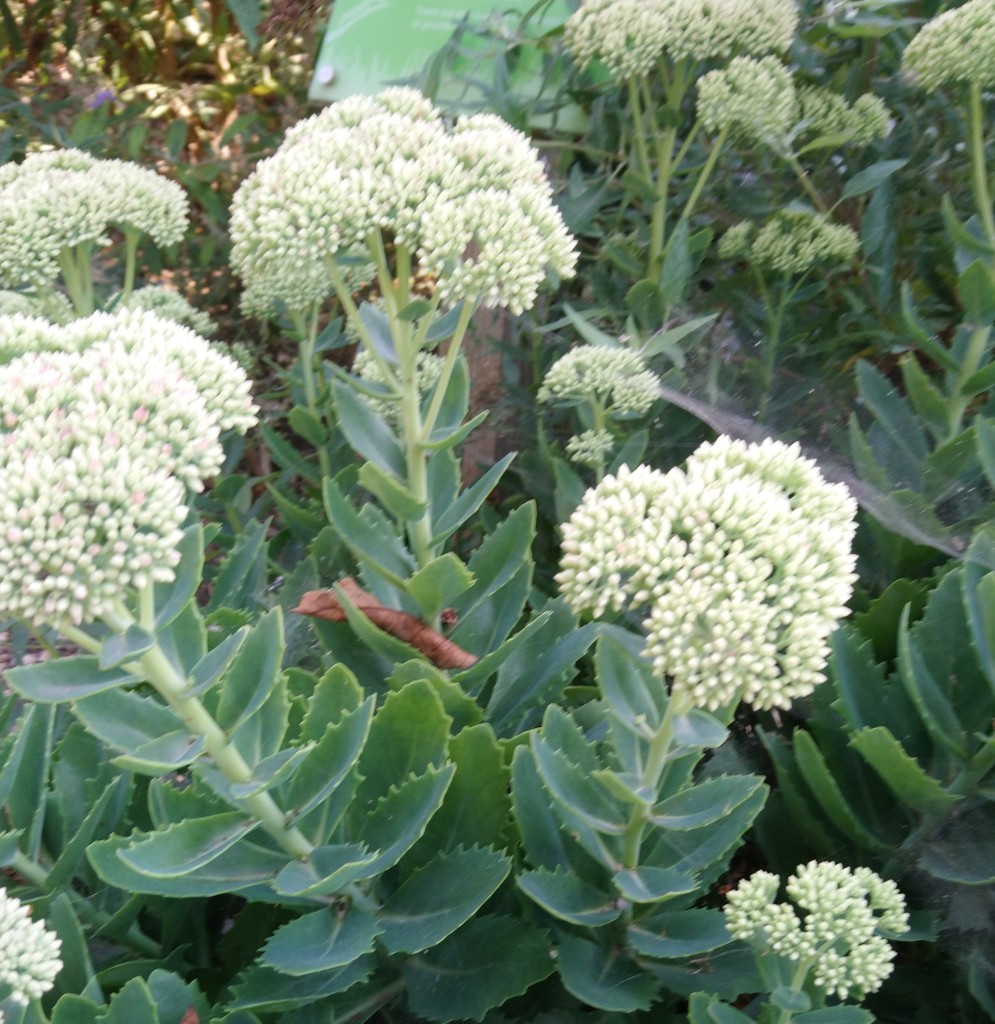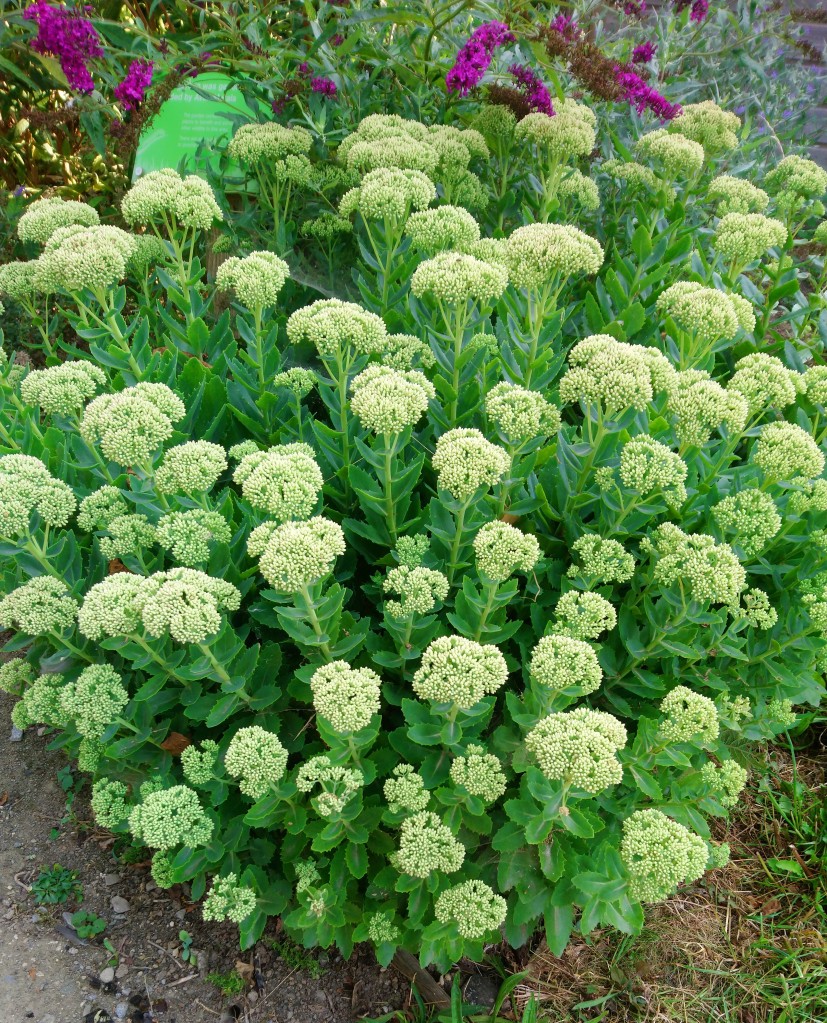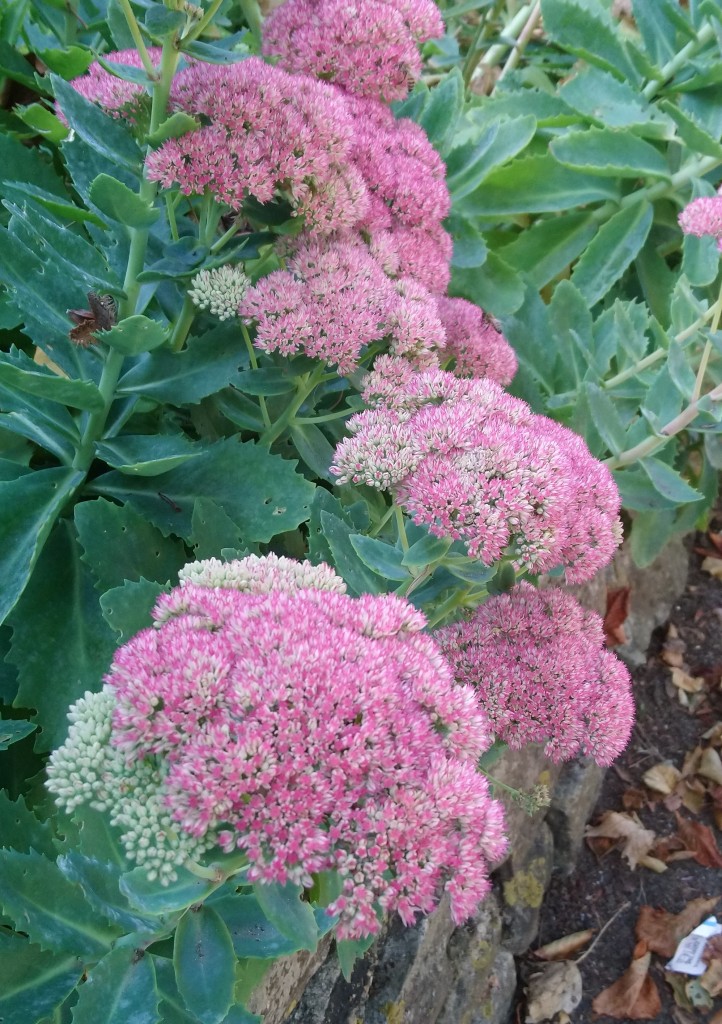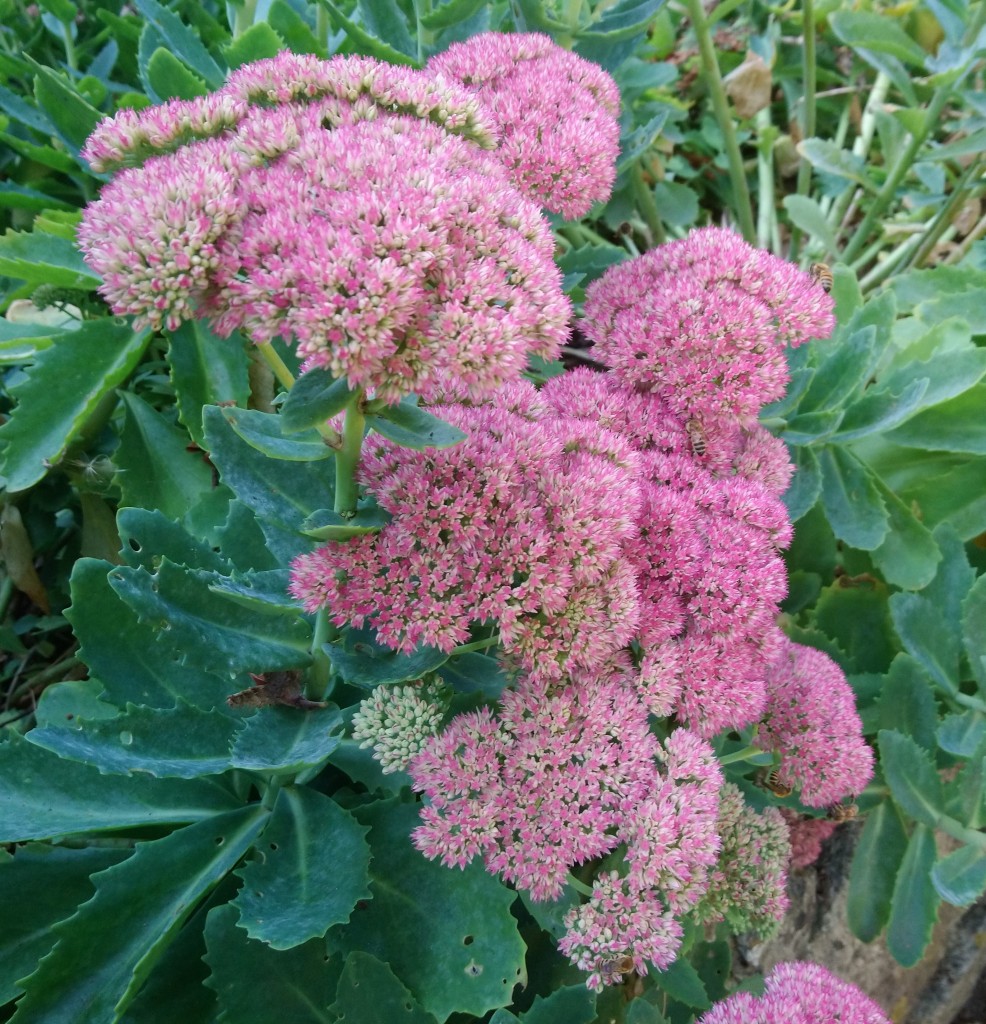
[312] Sedum album, White Stonecrop and Other Sedum
Introduction
Approximately thirty species of Sedum are found in Britain out of about five hundred. They are sprawling, very low-growing succulent plants that spread vegetatively for much of the year and may be hard to identify until they flower. Sedum album, White Stonecrop, is a common species with white flowers.
Species of Sedum and some related genera are also called stonecrops.
Taxonomy
Kingdom – Plants
Division – Vascular Plants
Class – Angiosperms (Flowering Plants)
Order – Saxifragales
Family – Crassulaceae
Subfamily – Sempervivoideae
Tribe – Sedeae
Genus – Sedum
Scientific Names – Sedum alba and others
Taxonomy of Sempervivoideae is uncertain. Many varieties of Sedum are cultivated as garden plants but are not generally assigned to a specific species.
Name
They are called Stonecrop because they appear to grow out of stones. Sedum is the Latin name of a plant called the houseleek, a close relative of the modern Sedum genus.
Album, as we have seen (generally in the feminine form, alba) means white.
Description
The taxonomy of the whole Sempervivoideae subfamily is complex, changing and uncertain, and the genus Sedum is still polyphyletic – even though many species have been moved out of the genus. It’s a collection of similar looking succulent plants.
Its six hundred species have been reduced to four or five hundred fairly recently be removing 32 separate genera. A study from 2020 has proposed merging Sedum with the rest of the tribe Sedeae, which would give it a total of 750 species.
It won’t surprise you that there is no general agreement on how to divide Sedum into subgenera and sections
In addition to its complex and uncertain taxonomy, any identification to species level is made more difficult because the plants have two different forms. For most of the year they grow vegetatively and form a solid, mat-like cover of small, succulent leaves – cylindrical with blunt, rounded tips.
It is only in the period of flowering in summer that taller erect stems emerge bearing small, dense inflorescences of white or yellow flowers.
Species
- Sedum acre – Biting Stonecrop, Mossy Stonecrop, Goldmoss Stonecrop or Wallpepper. Native to all of Europe. Low growing in stony areas such as beaches and walls. The flowers are bright yellow.
- Sedum album – White Stonecrop. This is also low growing on stony soils. The stems with white flowers emerge in July and August
- Sedum reflexum – Also known as Sedum rupestre or Petrosedum reflexum, Reflex (or Reflexed) Sedum, is another similar common species. Other names include Blue Stonecrop, Stone Orpine, Jenny’s Stonecrop, Prick-madam and Trip-madam. My identification app consistently identified some Sedum as this species in the winter. In summer when it flowered it was identified as White Sedum but the app kept calling some of it (not yet flowering) Reflex Sedum. Native to much of Europe. Low growing and sometimes blue-grey, as other Sedum species.
- Sedum sarmentosum – Stringy Stonecrop, Gold Moss Stonecrop or Graveyard Moss. Native to East Asia. Flowers are yellow. Widely cultivated sometimes on graves.
- Sedum sexangulare – Tasteless Stonecrop. Similar to Sedum Acre, native to Eurasia and often cultivated.
- Sedum telephium – [180] Orpine, generally known as Hylotelephium telephium.
I will not attempt species identification for my pictures.
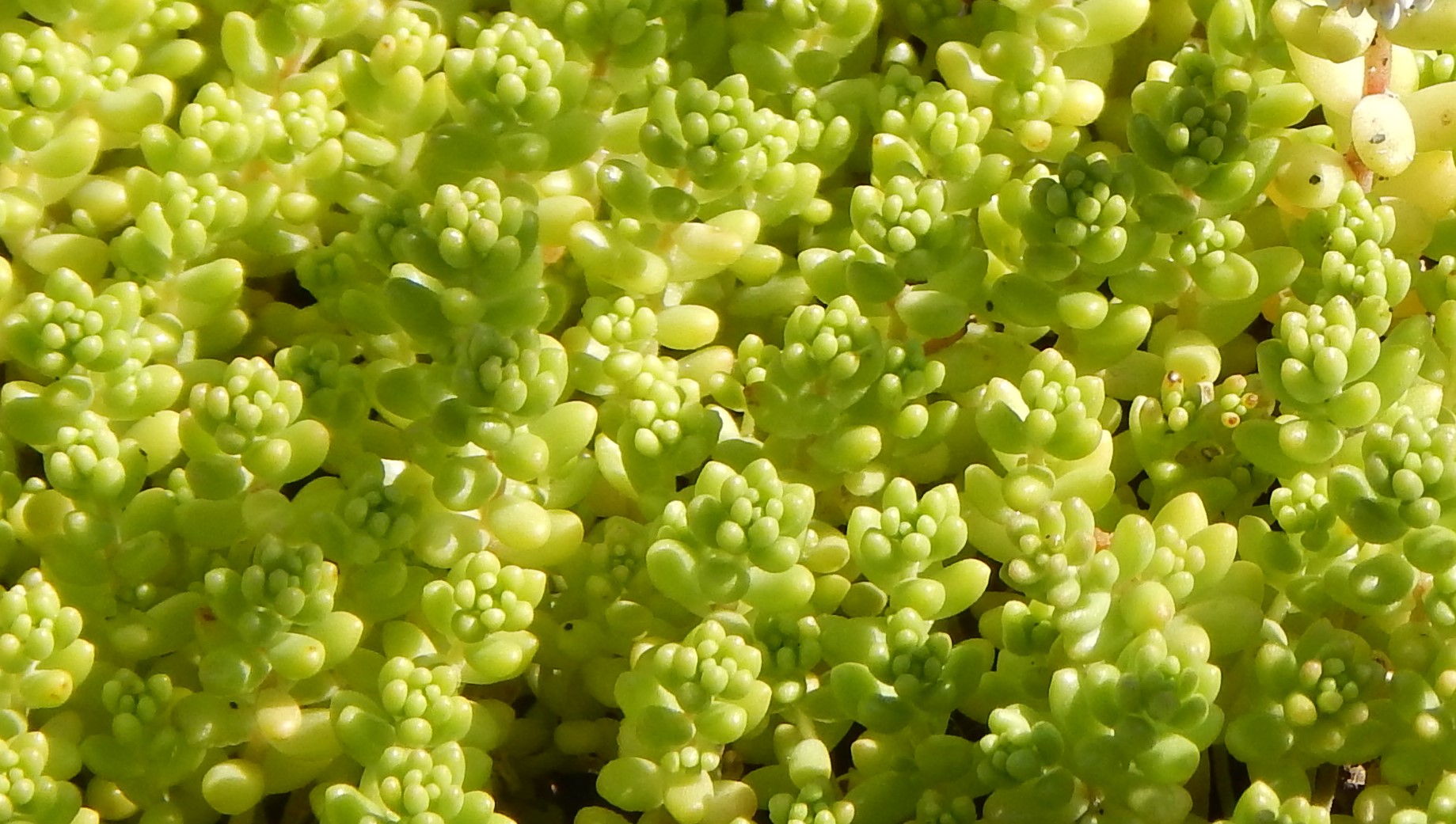
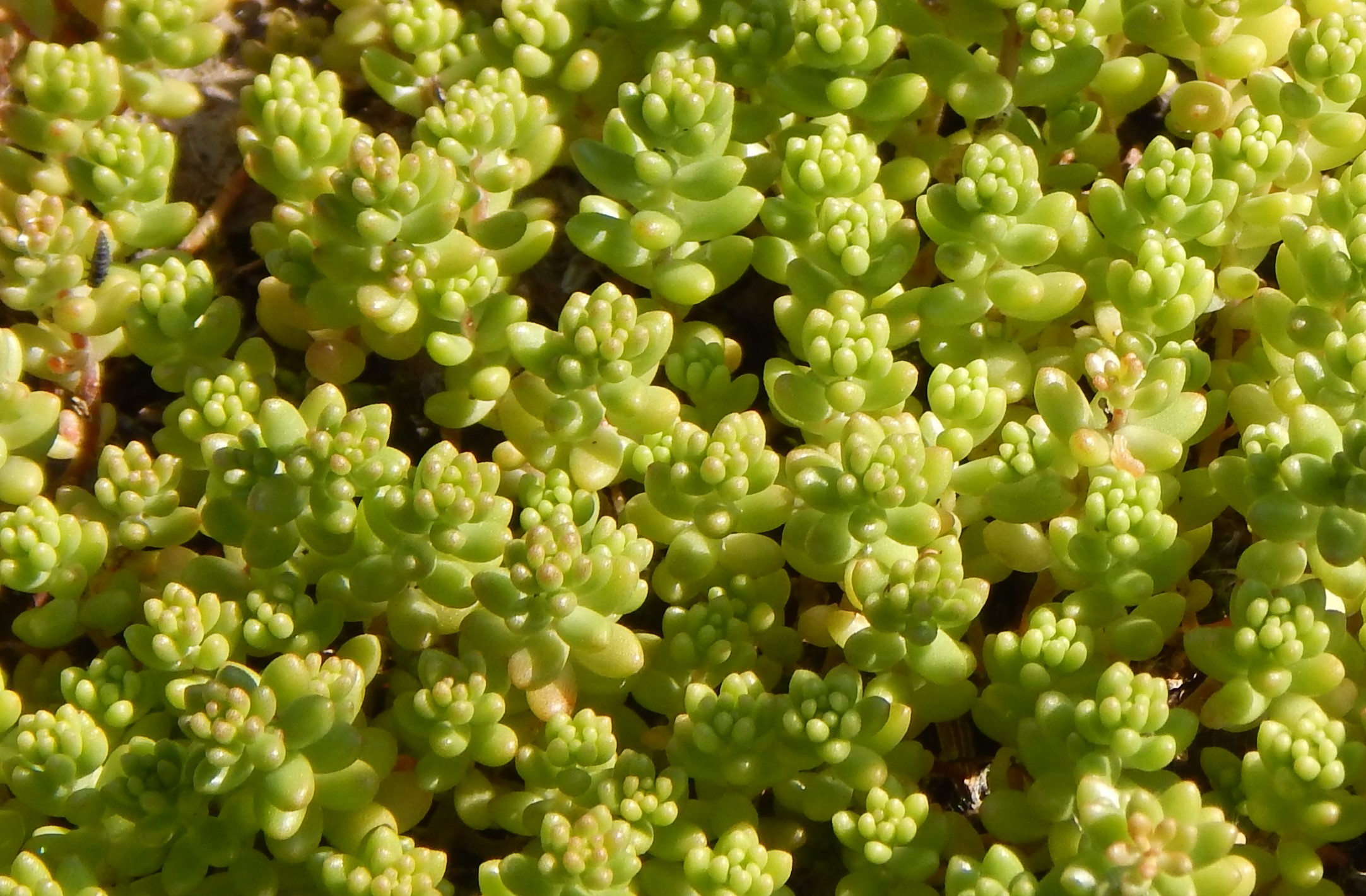
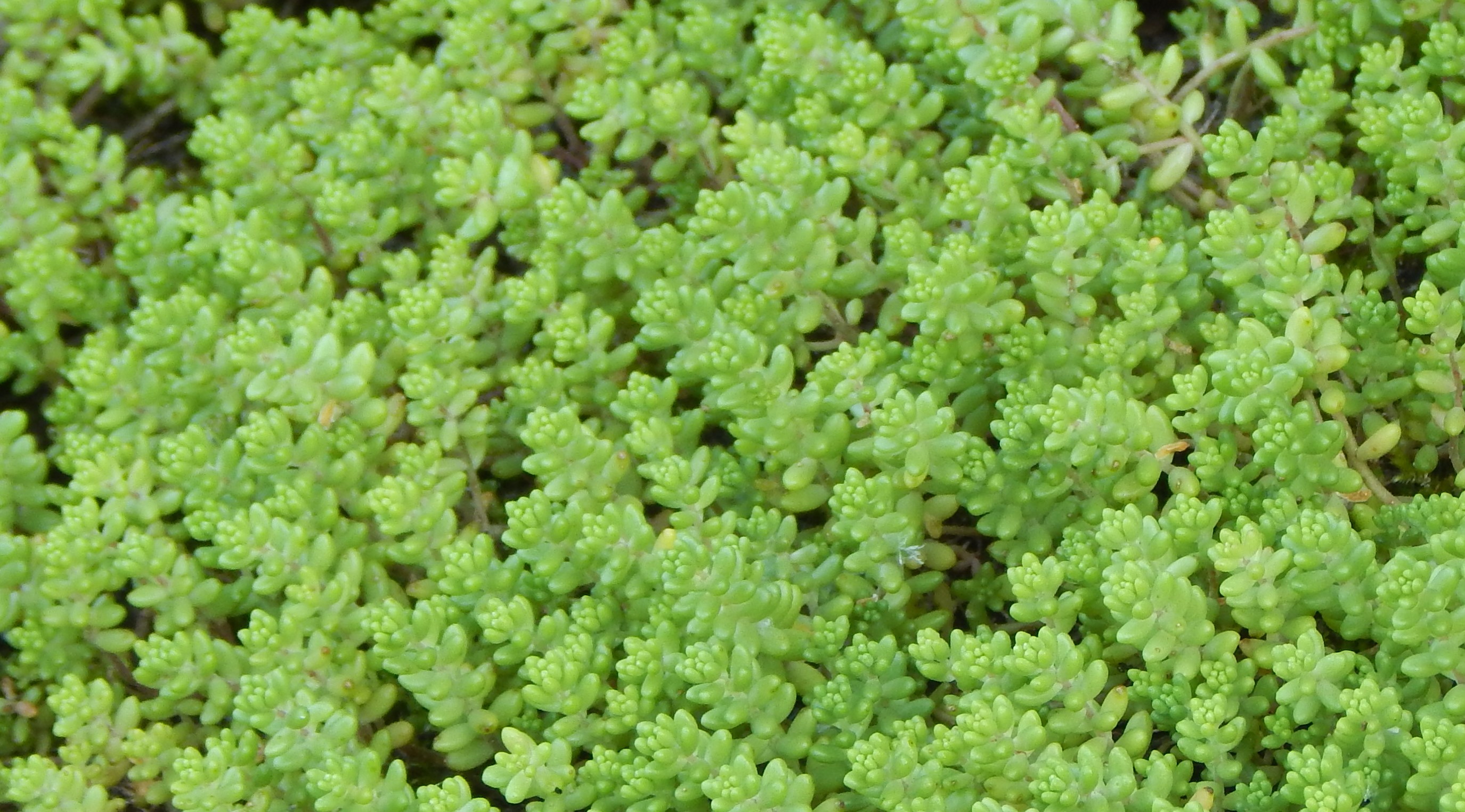





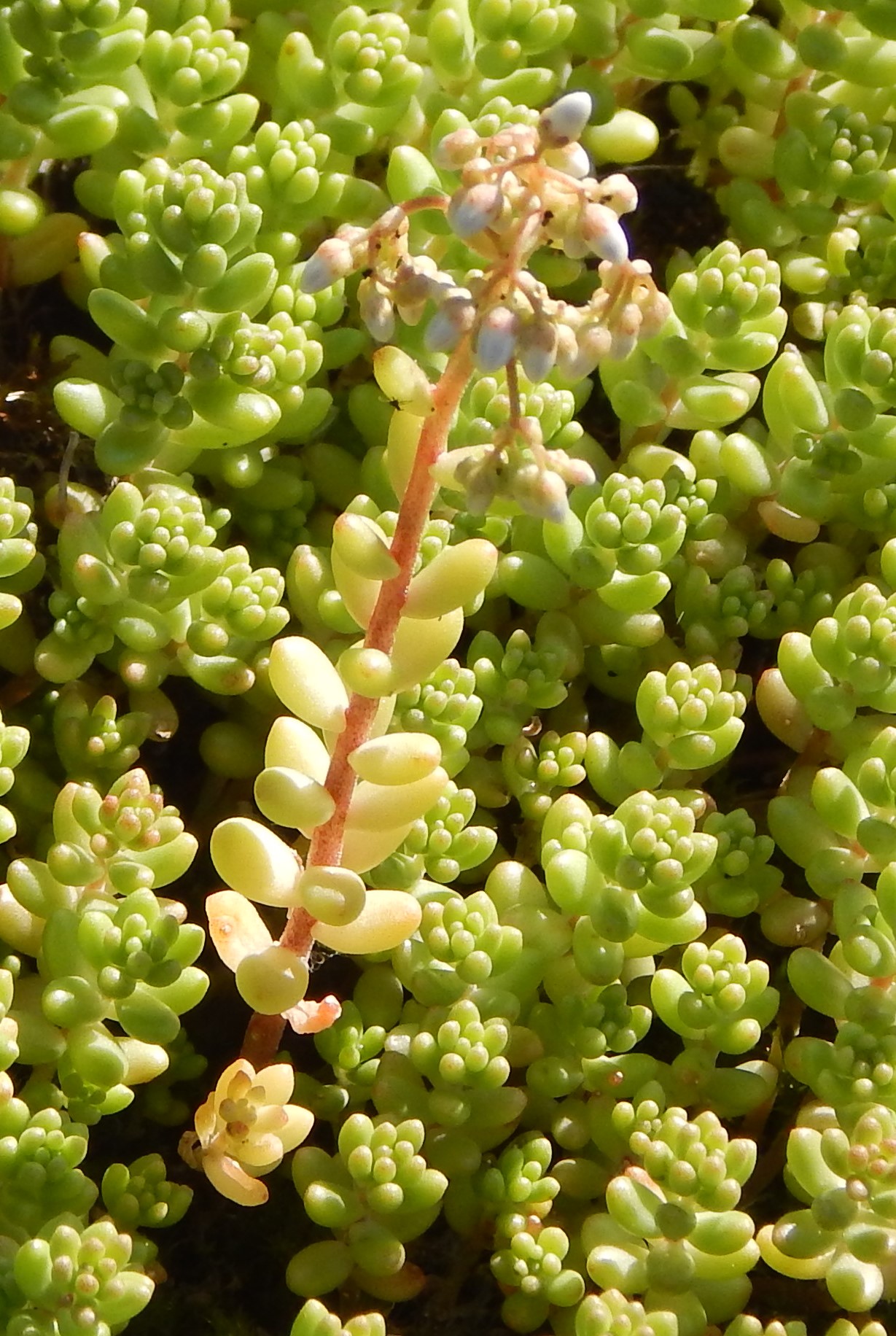





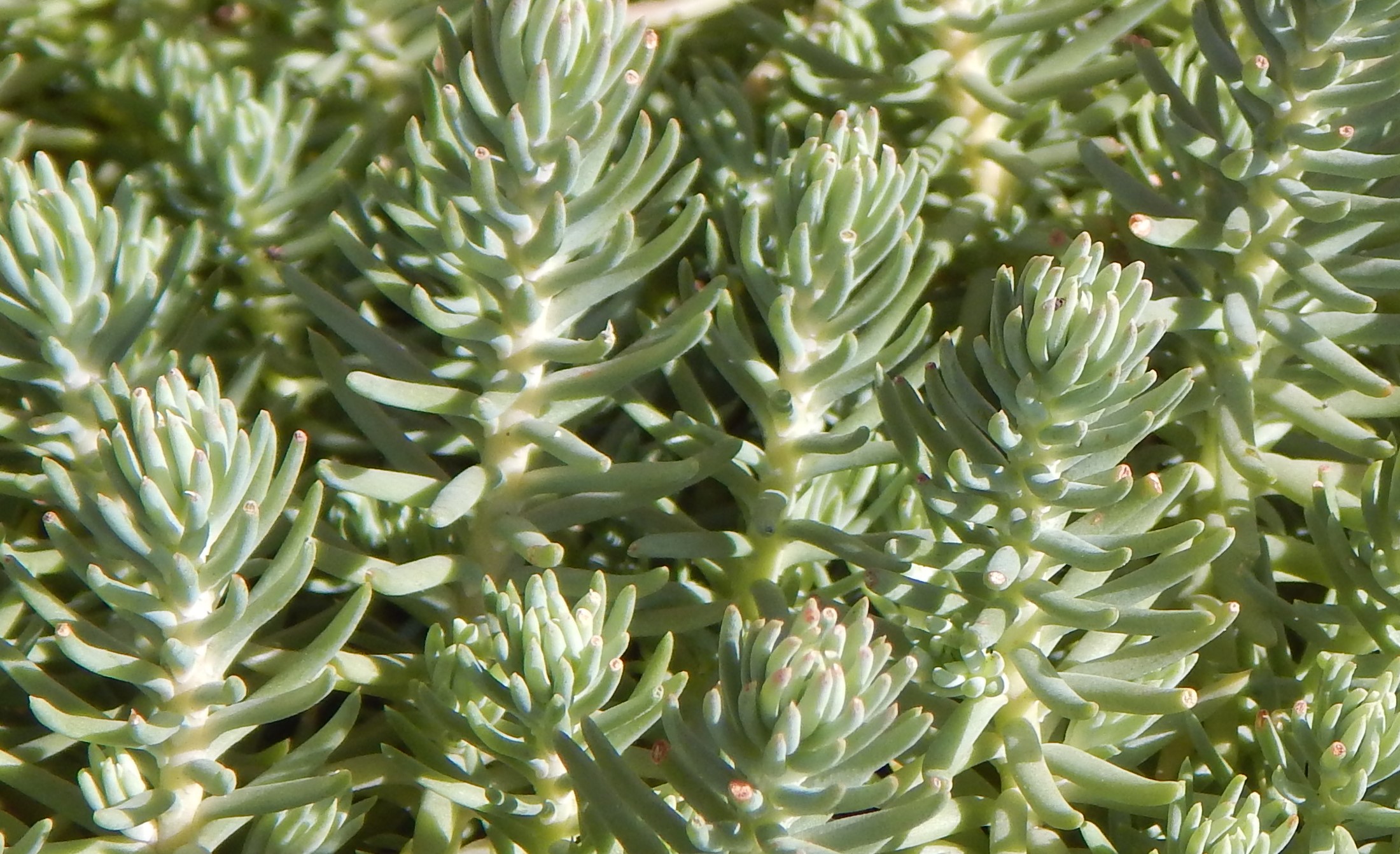

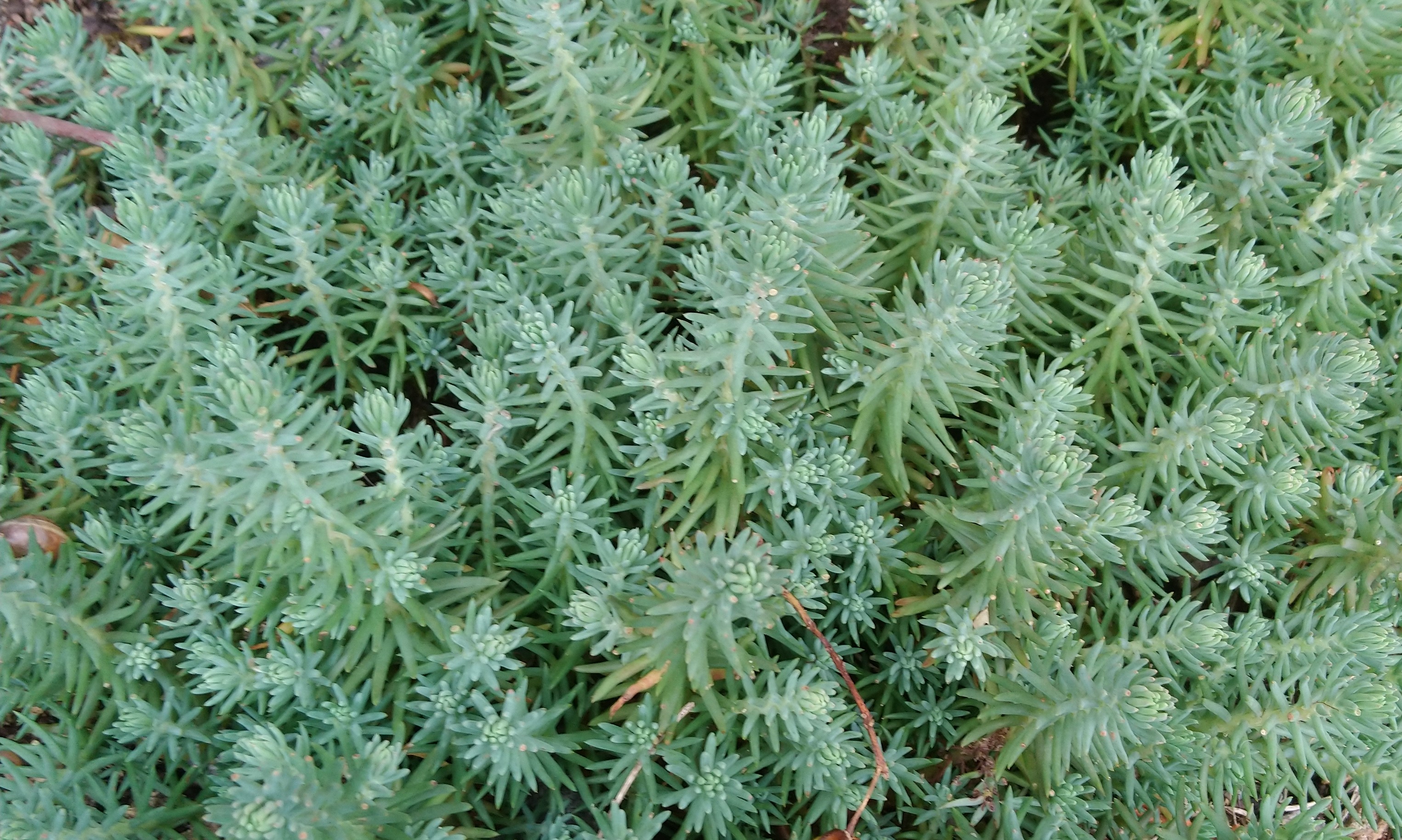

Habitat and use
Species of Sedum are found throughout the temperate Northern Hemisphere, Africa and South America. Sedum album is found all over the Northern Hemisphere. Sedum generally cannot compete with more vigorous species but is adapted to survive in thin, dry soils or rocky places.
Many species are cultivated as ornamental garden plants and house plants. Many named cultivars are hybrids or unspecified species.
Sedum is sometimes used as a green roof covering.
Other Notes
I have found Sedum on walls, pavements and stony car parks. My yellow flowered pictures come from gravestones.

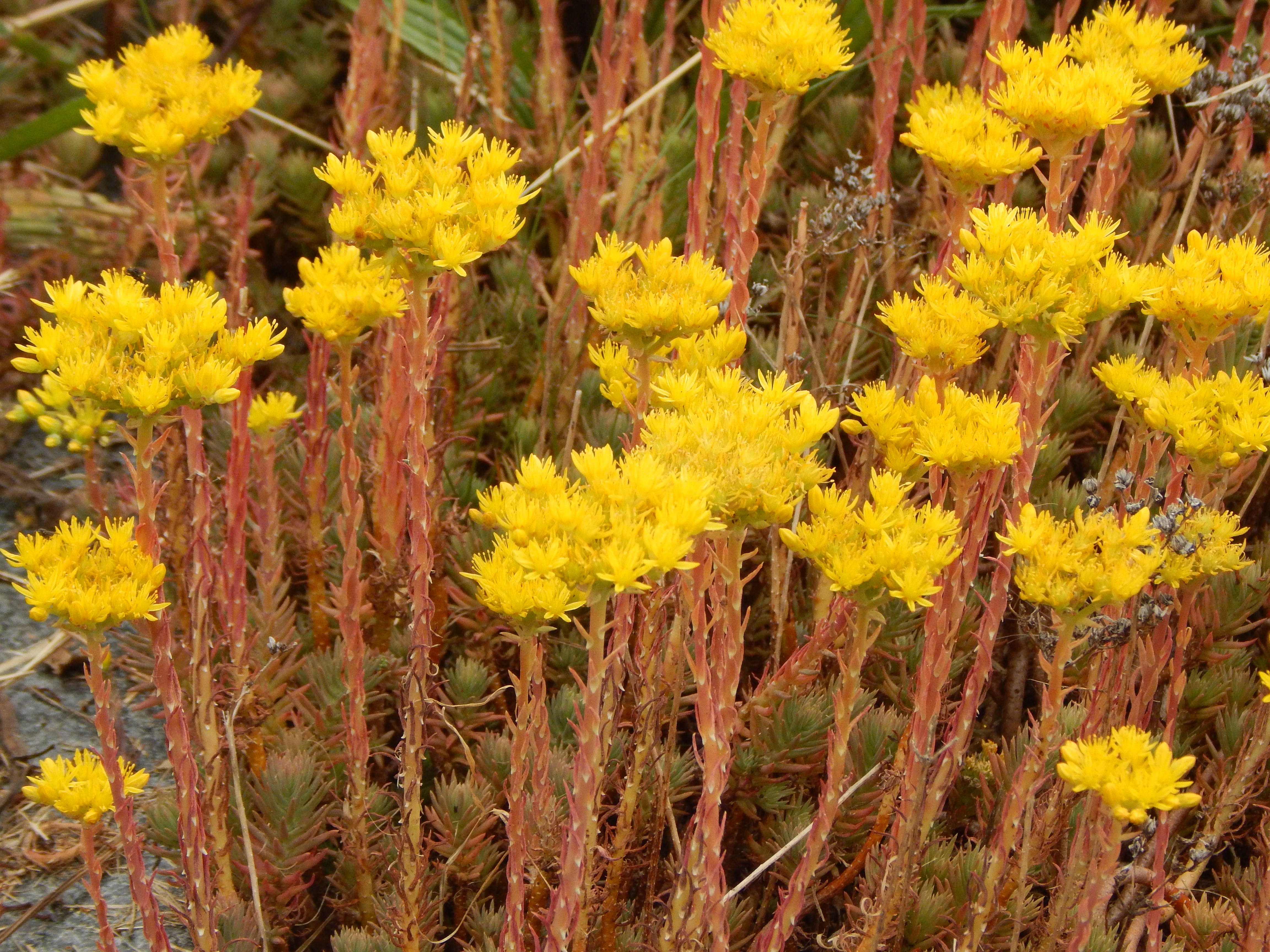






See also
Orpine is one of many species that have been moved out of the genus Sedum.




